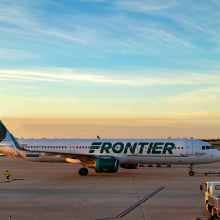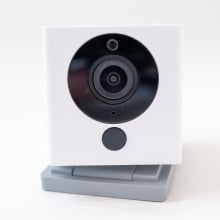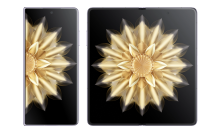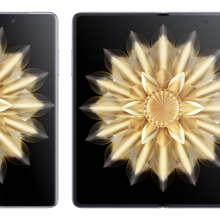UPDATE: Aug. 8, 2023, 5:00 a.m. EDT This guide has been updated to reflect Mashable's latest hands-on testing.
We live in an age of over-sharing, but the best travel cameras do so much more than help you post your adventures on Instagram, Youtube, or TikTok. Travel cameras can also help you freeze moments in time so that you never forget your favorite travel experiences. Travel photography can be a great way to capture pictures of your loved ones at their happiest, and you may look back on these photos decades in the future.
Of course, the best travel camera should also be used to show off your adventures on social media — we never said over-sharing was bad.
The best cameras for travel make it easy to take pictures without overstuffing your suitcase. While there are plenty of accessories for travel photography, modern travel cameras are lightweight, compact, and user-friendly.
As anyone who's had to sit on their suitcase to close it would know, you need to save every square inch you can when packing. You should always make sure you have the essentials, but nobody wants to have to throw things away at the airport gate because their bag is overweight.
Unless you're a professional YouTuber or National Geographic photographer, chances are you don't want to lug around a heavy-duty model, or a mirrorless camera that requires five different lens for each subject. Similarly, if you're not part of a camera crew traveling for work, a fragile camera that requires careful packing and gentle handling probably isn't worth the trouble.
Fortunately for you, Mashable is on the case, and we’ve been busy researching, testing, and reviewing travel cameras. When picking the best travel camera for every type of photographer — whether you’re a beginner, photography expert, action-adventurer, or content creator — we looked for easy-to-use and easy-to-pack cameras that won’t get in your way.
Should you bring a travel camera at all?
If you clicked on this article, you're likely planning to. But take a minute to consider your phone camera — if you have a new smartphone, it probably comes equipped with a camera that has formidable photography abilities of its own. In fact, the newest flagship smartphones have some downright futuristic photography capabilities. We're not even impressed by the iPhone's ability to shoot in 4K anymore. Give us advanced lowlight photography from Pixel phones, the Samsung Galaxy's famous ultra-zoom lens, or the Xiaomi smartphone with Leica cameras.
So, if you already have the latest iPhone, Samsung Galaxy, or Xiaomi model, is there any reason to carry an extra camera instead of just snapping pics with that?
Well, it depends. For skilled photographers, even the best smartphone cameras can't compare to a mirrorless camera from Sony or Leica. For everyone else, there are still lots of reasons to upgrade to the best travel cameras.
Are you going somewhere beachy and want to take cool underwater photos without worrying about water damage? Is this a ski trip or something active that requires image stabilization and 4K HDR video? Or would you just rather keep your phone safe in your bag at all times, so that you don't accidentally drop it while taking pictures? For all of the above, the best camera for travel will outperform your smartphone camera.
Whatever the reason (even if it's just better quality pics for the 'gram), if you want to pack the best camera for travel, you should evaluate your options based on the following:
Technical Considerations:
Size/Weight: There's no point to investing in a professional model that doesn't fit in your travel bag. Make sure that your choice isn't so hefty that you don't end up leave your camera and lens at home.
Image Quality: Anyone can snap a blurry picture of the Eiffel Tower, but you want a crystal-clear and totally unique photo to remember your trip. A camera's sensor size will be the biggest factor on overall image quality (more on this below).
Zoom Range: Despite massive advances in smartphone camera technology, this is still one area in which most smartphones fall short. For close-up photography, you'll need cameras equipped with zoom lenses.
Shooting Modes: Versatility is one of the other perks of toting around a camera — from drones that will give you aerial shots to vlogging cameras for video quality, different devices offer different advantages over your standard phone cam.
Price: Above all, don't purchase anything beyond your means. For this guide, we've avoided $5,000 Lecia cameras, as these can be risky to travel with unless you're a professional photographer.
What's the difference between DSLR and mirrorless cameras?
When searching for the best travel cameras of 2023, we wanted to include the most common types of travel cameras: mirrorless cameras, DSLR cameras, action cameras, and drones. (We also decided to include a smartphone for good measure.) But what type of camera is best for your needs? Action cameras, drones, and smartphones are pretty self-explanatory, so what's the difference between DSLR and mirrorless cameras? And what camera is best for travel photography?
For a long time, DSLR cameras were the gold standard for high-quality digital cameras. They provide professional-level photo quality and more advanced features for experienced photographers. DSLR stands for digital single-lens reflex camera. In this type of camera, light passing through the lens bounces off a mirror into a traditional viewfinder. Even the best DSLR camera for travel will be larger in size compared to point-and-shoot and mirrorless cameras, and this can be an issue when traveling.

Mirrorless cameras don't have a mirror, and thus lack a traditional viewfinder (although they typically have a digital viewfinder). For this reason, mirrorless cameras are lighter and more compact than DSLR cameras, which also make them more travel-friendly. Because of the digital viewfinder, mirrorless cameras often have a shorter battery life compared to a DSLR.
You can take equally great images with both a mirrorless and DSLR camera. Because mirrorless cameras are newer (and more trendy), many of the best new cameras fall into this category. However, DSLR cameras are often much more affordable.
The specs to look for in the best travel cameras:
To pick the best camera for travel, you'll need a basic understanding of some photography terms and camera specifications. You could spend a lifetime mastering the art or photography, but before buying a camera, take the time to familiarize yourself with the following terms.
Megapixels: The unit itself (MP) denotes one million ("mega-") pixels, which essentially describes the detail of your photos. You can have too many megapixels, depending on your purpose — Instagram, for example, automatically downsizes overlarge images to 1.2MP.
Image File Format: This refers to the image formats supported by the camera. Typically, this includes .jpeg and raw image files. A camera with easy-to-access image files is an underrated feature. This can be important if you're traveling for a long time and want to be able to access your pictures externally from your camera ASAP. Make sure you can open and, if necessary, edit photos on your laptop or even phone (an adapter or external card reader will usually be needed as well).
Sensor: A camera's sensor has a huge impact on overall image quality, which is why sensor size is the main specification professional photographers look at. Bigger sensors have more pixels, which means better low-light and dynamic performance as well as reduced noise. However, smaller sensors have a better zoom range and are both lighter and cheaper. DSLR and mirrorless cameras usually have full-frame (~36mm wide) or APS-C (22.3-23.6mm wide) sensors, while compact cameras have 1-inch (13.2mm wide) sensors. The iPhone 11 has a 1/2.55" sensor, for comparison, and that will give you 12MP images. For a more detailed guide to sensor sizes, check out this graphic.

Lens: Pro photographers will rattle off details about the makers and materials of camera lenses, but what you really need to know is mostly just aperture and focal length. So while names like the "Nikon AF-S 24-70mm f/2.8 E ED VR" look intimidating, they really just boil down to naming conventions that list brand, lens type/size, focal length, maximum aperture, and miscellaneous details ("VR" here stands for vibration reduction) in that order.
Focal length denotes zoom, and aperture is how much light the lens lets in, which affects exposure and depth of field. Zoom is fairly straightforward — some lens have ranges, while others have a fixed focal length, so you'll have to move to get your subject in frame. Aperture, on the other hand, is measured in fractions. A smaller aperture, say of f/11, gives you less background blur (like, the opposite of portrait mode), aka more depth of field, and a darker image. Larger apertures — f/2.8 is pretty standard — will give you a very focused effect with lots of light.
Continuous Shooting Speed (Video Mode): Measured in fps — that is, frames per second — this number is what you look at if you need your camera to be capable of quick shots for action scenes. The higher the frame-rate, the smoother and clearer the action.
Max Video Resolution: This one is mostly for those people who want to edit a highlight reel of their travels, or vlog their trip. Otherwise, typical 1080p will do just fine for most purposes — you don't need to splurge on 4k unless you want to crop footage while retaining the quality (and you really don't need 8k unless you're a filmmaker).
While this sounds overwhelming (and it definitely can be, to be honest), if you aren't fussed about specs, our list below gives a quick breakdown of what each camera is good for, taking into consideration all its features. On the other hand, if you have a very specific lens type in mind or just want to fully understand your purchase before committing, take a look at the listed specs and how they compare.
With all this in mind, we've gathered the best cameras for travel below. Our top recommendations were hands-on tested by the Mashable team, and we've included some additional options so that you can find the best travel camera for your particular needs.
This guide is geared more toward photography beginners than pros, so we've favored cameras that are more affordable and beginner friendly. And to make sure they travel well, we've prioritized cameras that are durable, lightweight, and compact.


















